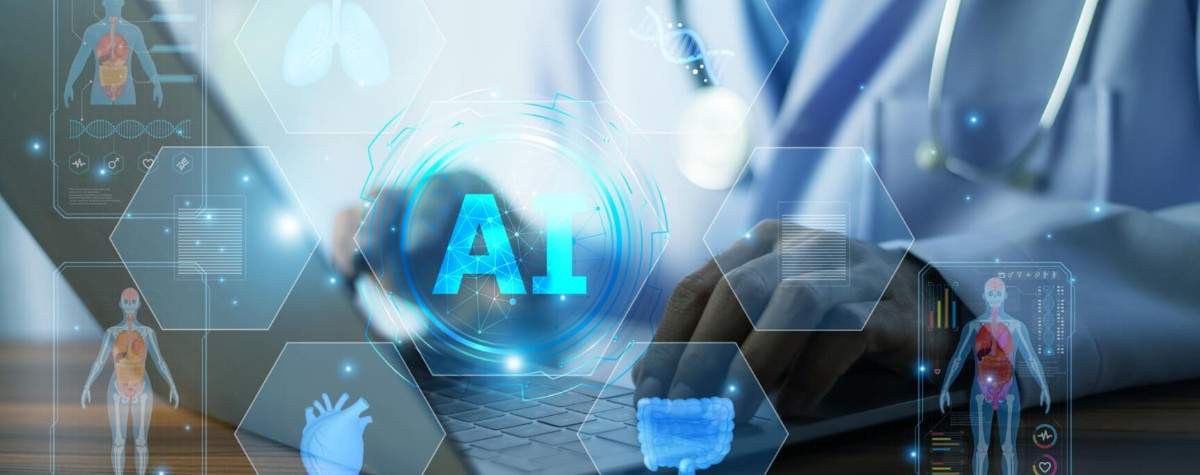


Discover how AI in MedTech and diagnostics turns data into actionable insights for better patient outcomes in healthcare.
Medical sensors, electronic health records (EHR), imaging systems, wearable devices, genomics platforms, and remote monitoring tools are producing unprecedented volumes of clinical and device-generated data every hour. Yet data on its own does nothing.
The core idea of AI in MedTech is simple: merge high-quality data with models, engineering, and workflow integration. This approach aims to create clear improvements in clinical outcomes. Value comes when raw signals turn into informed decisions. These lead to targeted interventions and smoother workflows. This makes care safer, more personal, & more efficient.
With the right healthcare AI solutions, underpinned by rigorous validation, explainability, and secure integration—organizations can close the loop from sensing to action: sense → analyze → decide → intervene → learn.
This article examines AI-driven healthcare innovation across data sources, and deployment roadmaps, with emphasis on AI integration in medical devices and AI-powered diagnostics to deliver AI for patient outcomes. Throughout, the focus remains constant: turning data into decisions that improve patient safety, quality, and experience.
Data from an increasing number of sources are feeding medical devices and clinical systems:
Each stream is a river of potential insights about patient status, disease progression, and device performance.
Real-world medical data is notoriously messy. It shows key friction points that stop organizations from using their data assets fully:
Standard rule-based analytics and statistics are necessary, but AI and machine learning bring unique strengths to the table through healthcare AI solutions. They excel at:
In other words, AI in medical devices allows us to pivot from asking “what has happened” to “what may happen”—and most importantly, “what to do next.” This is the core of AI-driven healthcare innovation.
To appreciate how Healthcare AI solutions generate value, we need to dissect the data-to-outcomes pipeline into its essential components.
Data Ingestion, Preprocessing, & Labeling: The journey starts with solid pipelines that collect, sanitize, normalize, and synchronize streams of data. This is where high-quality data is labeled by experts to produce training sets. The absolute rule applies garbage in, garbage out.
Model Training, Validation, and Explainability: The LLMs are trained and validated using strict protocols. This helps them perform well on new data and avoid overfitting. This process requires explainability modules, such as SHAP or LIME. These help clinicians see why a model made a certain recommendation. This helps build trust.
Integration into Devices and Clinical Workflows: A great AI-driven healthcare innovation model is of no use if it isn’t integrated into the clinical workflow. This includes incorporating models into AI in medical devices, making it interoperable with EHRs, and designing efficient alerts and user interfaces. This is the essence of systems engineering for AI.
Continuous Learning and Monitoring: Deployment is just the beginning. Models must be continuously monitored in the real world to detect performance drift. Retraining pipelines and version control are essential for maintaining the safety, calibration, & effectiveness of AI in the long term.
Clinical Decision → Intervention → Outcome: The loop ultimately comes full circle. The AI provides insights to clinicians or automated systems. They then implement interventions and assess patient outcomes. This new data is being reintroduced into the pipeline. This creates a cycle of continuous improvement.
Frameworks from the FDA for AI/ML SaMD and IMDRF clinical evaluation require valid clinical association, analytical validation, and clinical validation, often within a total product lifecycle approach. The EU MDR Rule 11 moves most diagnostic and therapeutic decision-support software to higher classes. This increases evidence & post-market surveillance (PMS) requirements.
Mitigation: Align the IEC 62304 development process, ISO 14971 risk management, and ISO 13485 QMS in the early stages, and prepare (where applicable) for PCCP at the product development stage.
The HIPAA Security Rule requires a risk analysis and safeguards for ePHI. Governance must cover de-identification, consent, and authorized use. WHO guidance emphasizes transparency, accountability, and equity to sustain trust as systems scale.
Mitigation: Employ strong governance, privacy‑enhancing techniques, and bias assessments with subgroup monitoring over time.
